A WONDERFULLY FIERY FALL
The Glory of the Hudson Valley Unfolds
Here on the farmden and beyond, this growing season is exiting with perhaps the most gloriously colored fall I’ve seen in decades. Standouts right around here this year are Korean mountainash, red oak, stewartia, huckleberry, and blueberry. Even Norway maple, usually with unsightly splotches of yellow, this year have been turning a fairly attractive pure yellow before dropping.
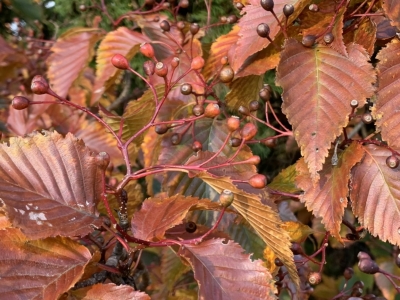
Korean mountainash
Knowing what puts color in leaves opens up the possibility for ratcheting it up. It might even increase appreciation for the various hues. To best do that, I’m going to plagiarize . . . from my own book, The Ever Curious Gardener: Using a Little Natural Science for a Much Better Garden.
Yellow and Orange
Green is from chlorophyll, most welcome in spring and through summer, but not what interests me in fall. Chlorophyll must be continually synthesized for a leaf to stay green. The shorter days and lowering sun of waning summer are what trigger leaves to stop producing it, unmasking other pigments lurking there.
That chlorophyll masks leaves’ yellow and orange, which are aways present. Yellow and orange are there thanks to carotenoid pigments, which help chlorophyll do its job of harvesting sunlight to convert into plant energy. Carotenoids are what give the warm, yellow glow to gingko, aspen, hickory, and birch leaves.
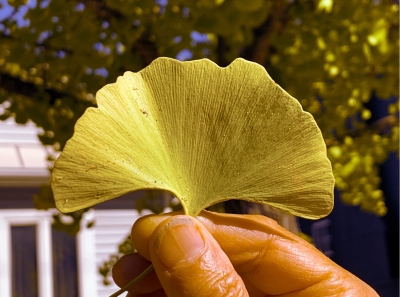
Ginkgo
Tannins are another pigment, actually metabolic wastes, that are masked by chlorophyll all summer. Their contribution to the fall palette are this season’s subdued browns, notable in some oaks and enriching the yellow of beeches.
Because leaves harbor carotenoids and tannins all summer long, nothing particular about autumn weather should either intensify or subdue their autumn show. The only glitch could be an early, hard freeze that occurs while leaves are still chock full of chlorophyll. In that case, cell workings come abruptly to a halt and all we’re left with is frozen, green leaves that eventually drop without any fanfare.
Reds & Purples
Autumn color also spills out reds and purples, most evident in red maples and some sugar maples, scarlet oak, sourwood, blueberry, and winged euonymous.

Blueberry in fall
Those reds and purples come from yet another pigment, anthocyanins. Except for trees like ‘Purple Fountain’ beech and ‘Royal Purple’ smokebush, whose leaves unfold dusky red right from the get go in spring and remain so all season long, in most leaves anthocyanins do not begin to develop until autumn.
Anthocyanin formation requires sugars so anything that I or the weather does to promote sugar accumulation in autumn will increase anthocyanin levels in leaves. The weather’s role is to offer warm, sunny days to maximize photosynthesis, and cool, but not frigid, nights to minimize nighttime burning up of accumulated sugars. A cloudy, rainy autumn means less red because less anthocyanin is formed, and any that does form is diluted. This fall’s weather has been ideal for plenty of purples and reds to supplement the yellow and oranges.

Red oak
Do Something
Our role in ratcheting up the reds, yellows, and purples of the season is to make sure that leaves bask in light. I plant a tree where light is adequate (for that species) and, as necessary, prune so that branches don’t shade each other.
Street lights don’t count as light, and actually have a negative effect, disrupting the signal that days are getting shorter and it’s time to slow chlorophyll production.
Visiting my daughter south of here, in Pennsylvania, earlier in the season a few years ago I was surprised by the vibrant fall color, which preceded color up here. With warmer temperatures and longer days, that color should have lagged color here.
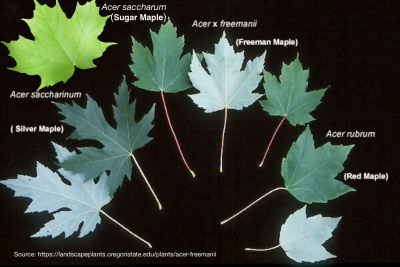
Differing leaf shapes of various maple species
Turns out I should have looked more closely at the leaves. Her fiery trees proved not to be sugar maples but, rather, Freeman maples, which are hybrids of red maple and silver maple. Both of the latter species, as well as the hybrid, light up before sugar maples.
Our other role in ratcheting up color is to plant trees genetically programmed for good autumn color. And among the most colorful-leaved trees and shrubs — which, besides those previously mentioned, include goldenrain tree, hickory, ironwood, black tupelo, and fothergilla — individuals within each species might pack a bigger wow than the others. Hence the spicebush variety ‘Rubra’, brick red in fall, or ‘Wright Brothers’ sugar maple, whose leaves become an especially fiery mix of gold, pink, orange, and scarlet.
All trees of a named variety are genetic replicas of each other, so must be reproduced by cloning. Cuttings are one method of cloning, but many trees don’t root readily from cuttings. Years ago a large sugar maple tree growing along the east-facing forest edge seemed suddenly to become noticeable one fall because of bearing especially colorful leaves. I could have taken some stems of that plant to graft on some sugar maple seedlings. That tree unfortunately died before I had a chance to graft it to give it renewed life.
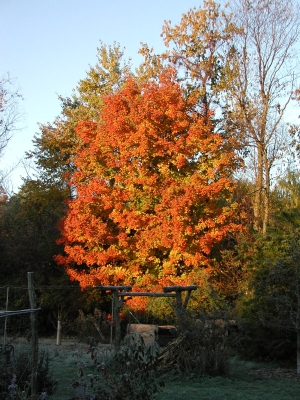
My long-gone sugar maple
I hope this has given you some insight into the “machinery” working within individual plants and how to work with it. That “machinery” is neatly woven together and imbued with its own poetry. Science provides one window into that poetry.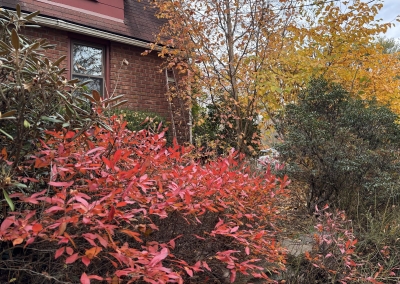


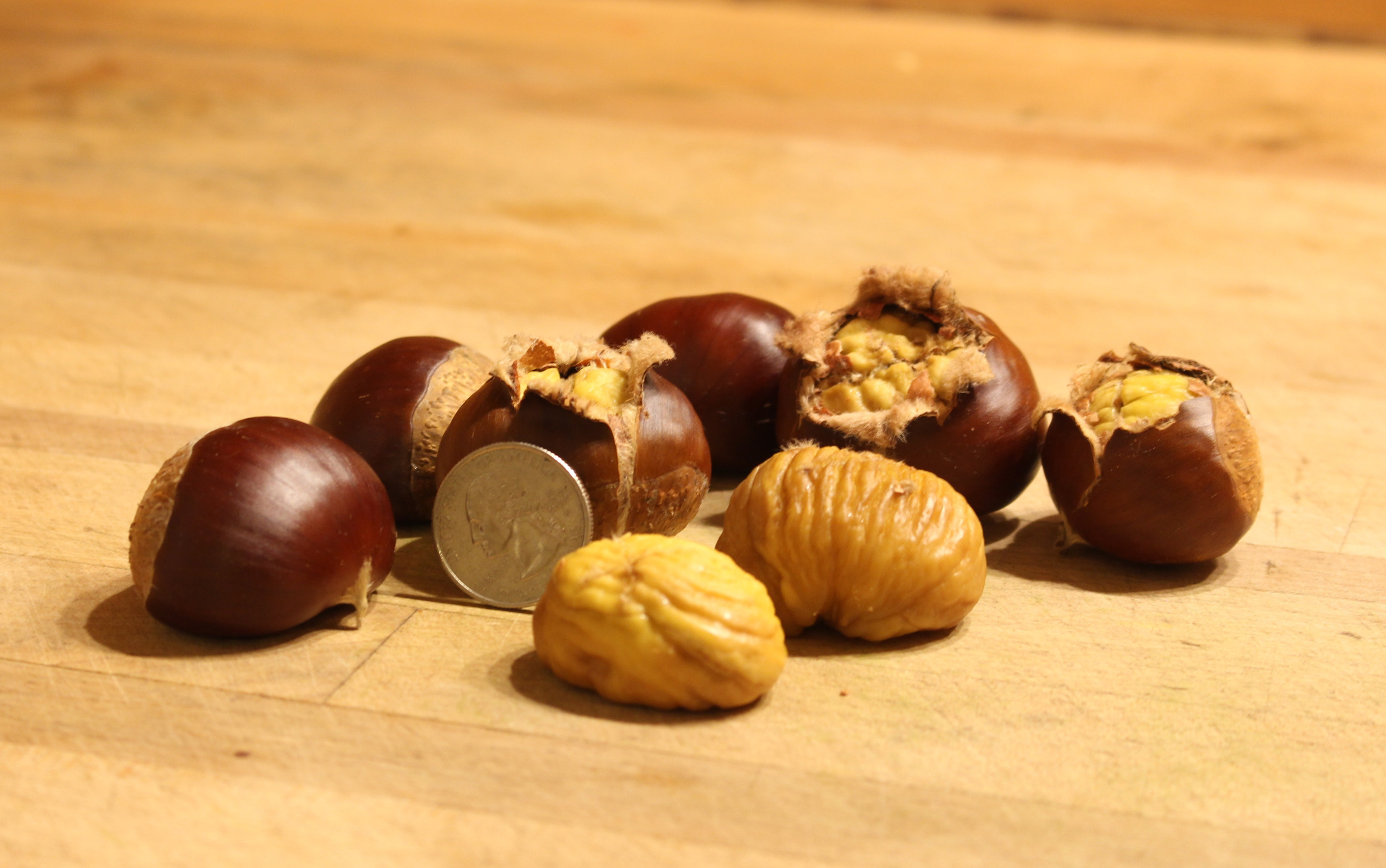

Leave a Reply
Want to join the discussion?Feel free to contribute!